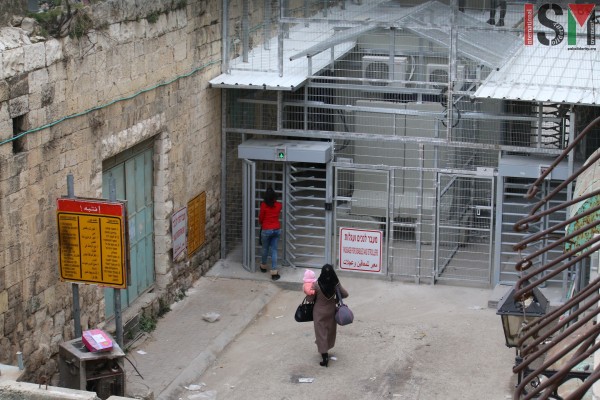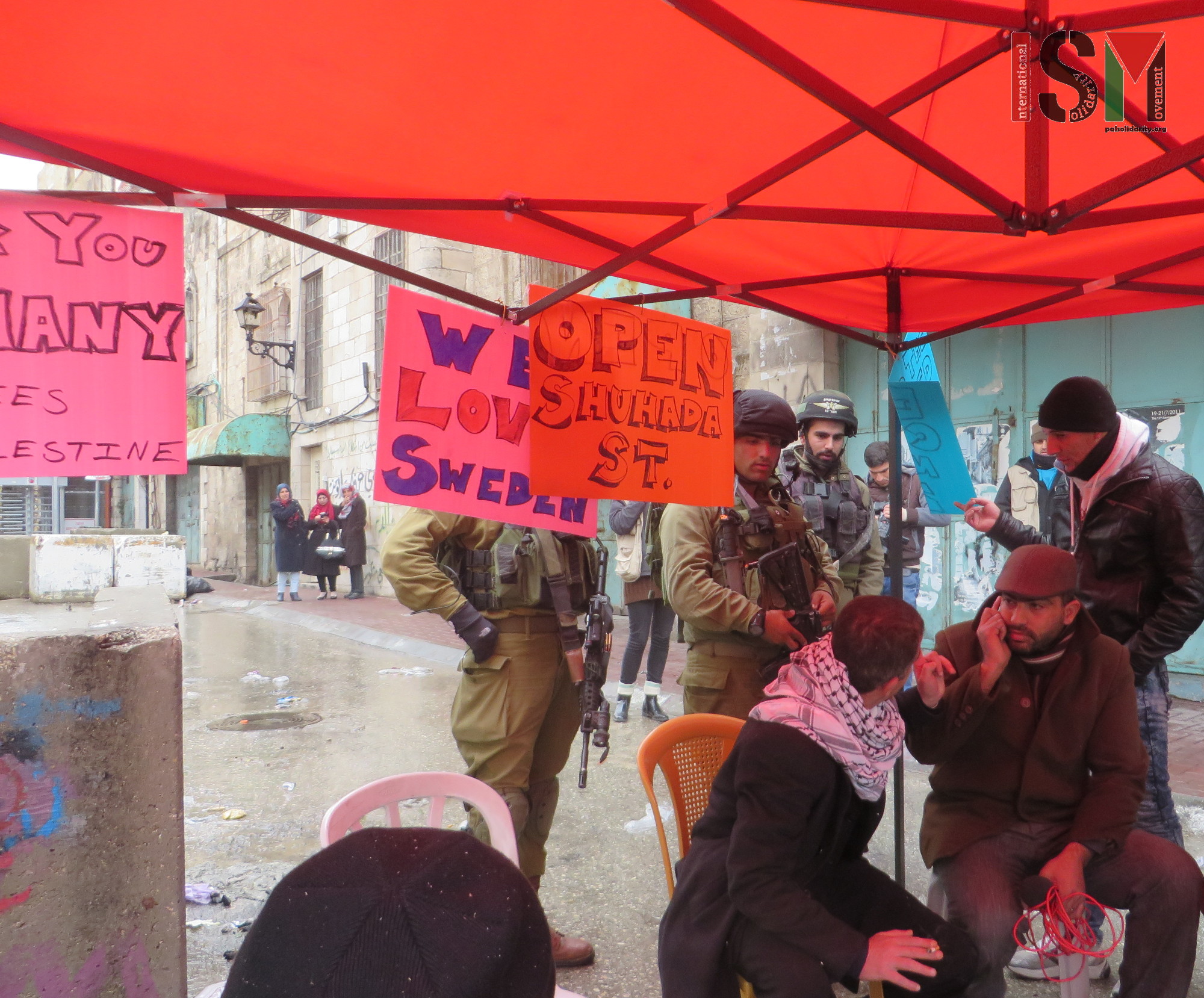Tag: Hebron
-
Demonstrators protest closed military zone under threat of Israeli violence
8th February 2016 | International Solidarity Movement, al-Khalil team | Hebron, occupied Palestine On 8th February 2016, Israeli forces threatened to attack a peaceful demonstration in front of Shuhada checkpoint in occupied al-Khalil (Hebron). Protesters gathered at noon to protest the continued closure of the Tel Rumeida neighbourhood, that on the 1st of November 2015…
-

100 days of collective punishment for Hebron residents
7th February 2016 | International Solidarity Movement | Hebron, occupied Palestine February 8th marks one hundred days since Israeli forces declared the Tel Rumeida neighborhood and the adjacent portion of Shuhada Street a “closed military zone,” requiring residents to register with the Israeli military and be assigned numbers in order to be allowed to access…
-

Closed military zone in Shuhada Street and Tel Rumeida extended yet another month
6th February 2016 | International Solidarity Movement, Al-Khalil Team | Hebron, occupied Palestine Since the 1st of November 2015 the Tel Rumeida area and Shuhada Street in occupied Al-Khalil (Hebron) have been declared a ‘closed military zone’. The first declaration of the closure was for one month, but since then the order has been extended…

